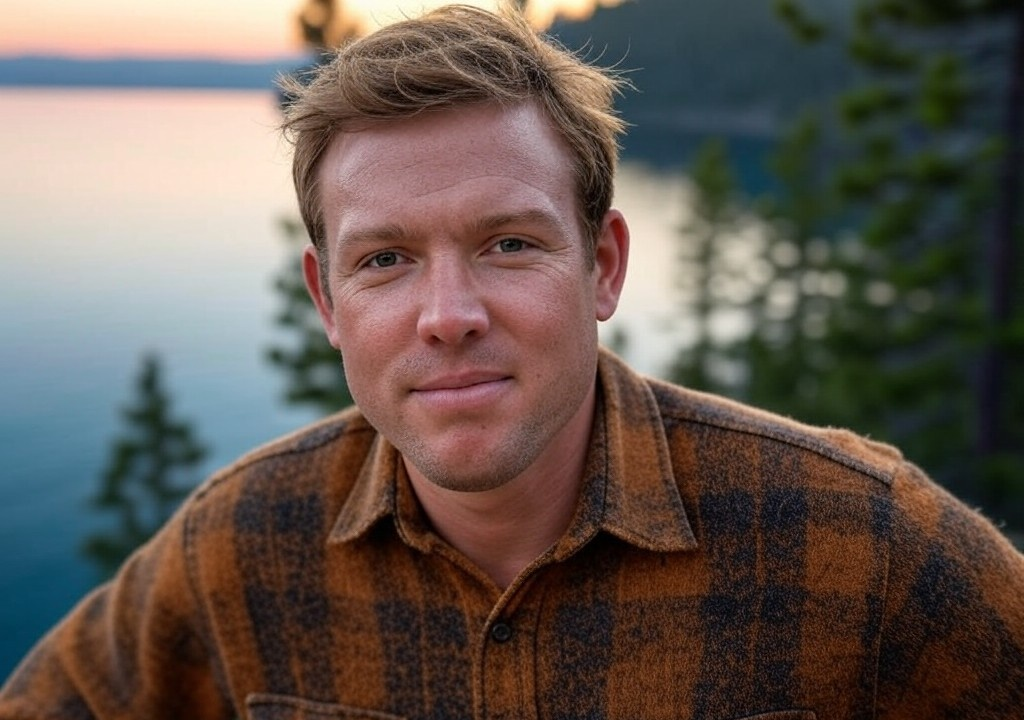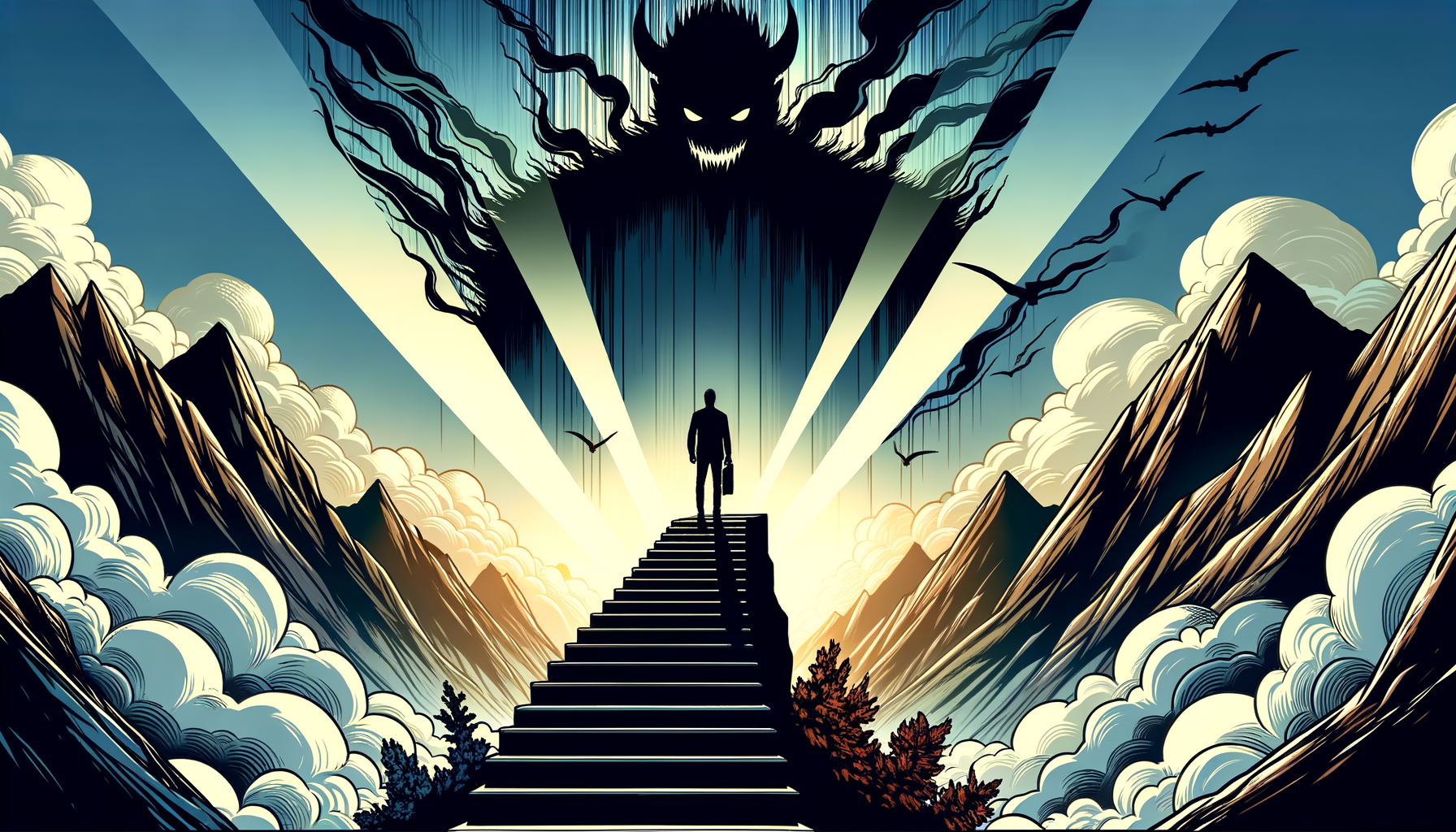The Mountains, the Fear, and Me
I was nine years old the first time I stood on a high ledge overlooking Lake Tahoe. The wind was whipping around me, unsteady and unkind, and the shimmering expanse of blue water below seemed both infinite and entirely too close. My friend Matt had just scrambled up to perch on the same rock, balancing precariously like some stunt double in a coming-of-age movie.
“Come on!” he called back to me, completely unaware that my stomach was staging a mutiny. “You gotta see the view from up here!”
But I couldn’t move. I was frozen, my sneakers glued to the ground as if the earth had been poured over them. That was the moment I realized I was afraid of heights—or rather, afraid of falling. Fast forward two decades and that fear still had its hooks in me, dictating which trails I hiked, what adventures I avoided, and whether I always volunteered to be “the guy on photo duty” whenever friends decided to try zip-lining.
But last year, in a moment of either bravery or insanity, I decided enough was enough. And here's how I made peace—well, shaky truce—with my lifelong nemesis: gravity.
Step One: Naming the Fear
It’s funny how something that starts as a physical reaction—quivering knees, sweaty palms—can morph into this huge narrative about yourself. “I can’t do heights,” I’d say, casually sliding it into conversations at every given opportunity, as though it was a fun fact about me instead of a full-blown insecurity.
Turns out, people fear a lot of things: rejection, change, spiders, public speaking (I’ll take arachnophobia for $200, please). But what I learned is that naming your specific fear is the first step to disarming it. “Fear of heights” wasn’t just some quirk; it was a story I had been telling myself that kept me tethered to the ground.
For years, that story felt like a cozy sweater I could wrap around myself whenever things got risky:
- “No, I can’t climb that rock—heights freak me out.”
- “Oh, I’ll sit this one out. But you all have fun up there!”
- “Take a scenic gondola ride? Why not just dangle me over a shark tank while we’re at it?”
But if you never challenge the story, it becomes a script you’re forced to live by. And truthfully, I wasn’t ready to keep living as some secondary character in my own mountain saga.
Step Two: Choosing the Right “Why”
Here’s where things get cheesy, but stick with me: I wanted to be free. Living near the Tahoe shoreline means rugged peaks, craggy overlooks, and some of the most inspiring vistas on earth are practically your backyard. Still, I’d never fully explored them. Sure, I’d gaze up at rocky summits or breathtaking ridges, but the idea of actually setting foot up there? Absolutely not.
I started to notice that my world was smaller because of this fear. Hiking trips stopped at flatter terrain. I’d take pictures of friends posing triumphantly at trail summits but couldn’t join them for the final stretch. My choices were increasingly dictated by what I couldn’t—or wouldn’t—do.
So I asked myself: Was this really the story of my life? Did I want to end up as the guy down by the lodge, trading stories and pouring cocoa while everyone else soared to new heights? My love of nature—and let’s be honest, a minor case of FOMO—gave me my “why.” I craved those views, that sense of accomplishment, even if part of me was still terrified.
Step Three: Starting Small
Here’s what they don’t tell you about conquering your fears: No one expects you to go full Tom Cruise in Mission: Impossible the first time you try. I wasn’t about to strap on climbing gear and free-solo El Capitan. Instead, I decided to start tiny—microscopic, even.
Remember that ledge where it all began? That rock near the lake? I went back there. It felt appropriate, kind of like coming back to the scene of the crime, only this time I wasn’t being peer-pressured by Matt (note to self: thanks for nothing, childhood friends). I climbed onto the rock with slow, deliberate steps, breaking the process into micro-movements like I had somehow transformed into a sloth.
When I finally sat on the ledge overlooking the water, something unexpected happened. Okay, my knees still wobbled. But there was also this rush of pride, coupled with the stunning realization that the only thing between me and the ground was my own two feet—and honestly, they were holding up just fine.
Step Four: Putting Fear on a Leash (Literally)
You know what else reminded me during this process? Dogs—specifically, my neighbor’s hyperactive golden retriever who has no chill whatsoever. She’ll yank you toward traffic or bolt after a squirrel at the first sign of weakness, but with enough patience? She’s trainable. Fear, like that unruly dog, doesn’t just disappear. You have to learn how to leash it.
For me, “training” meant facing incremental challenges.
- First, standing on a steeper rock.
- Then, walking along a narrow ridge—not too high, but just enough to test my comfort zone.
- And finally, tackling a short but serious climb in the Desolation Wilderness—a place as exhilarating as its dramatic name suggests.
Each moment was terrifying in its own way, but with every new attempt, I realized that fear was a passenger, not the driver. It rode along with me, barking like my neighbor’s retriever, but I was the one holding the leash.
Step Five: Laughing at Yourself
The most surprising part of this whole process? Humor may genuinely be the best tool for dealing with your deepest fears. Like that time I decided, mid-hike, that I needed to abandon the ridge and scoot backward on my hands and rear. (Yes, I became that person descending a mountain like an awkward toddler learning to walk—people clapped, and I’m still not sure if they were cheering or politely pitying me.)
Or when a group of hikers passed me near Eagle Falls, casually taking selfies on the cliff’s edge as I clung to a boulder like a hairstylist gripping their most precious curling iron. Watching their ease didn’t make me feel smaller; it made me chuckle. None of us are born calm next to the abyss. You get there by moving through the ridiculousness first.
Conclusion: Finding Balance
By the end of it, conquering my fear of heights wasn’t about never feeling scared again. Instead, it was about reclaiming parts of my life I had ceded to fear. I’ll probably never be the guy who skydives for fun. And you know what? That’s okay. But now, I can hike those steeper trails, climb those scrambling rocks, and stand at the summit without immediately plotting an excuse to come back down.
Fear is a storyteller, one that weaves tall tales about what it can protect you from. But you always get the final word. For me, that word turned out to be something small but mighty: forward.
So if there’s a ledge you’ve been avoiding—whether it’s literal or figurative—know this: You don’t have to leap. You just have to take one step closer.
And if that doesn’t work, hey, you can always scoot on your butt. Trust me, it builds character.




















